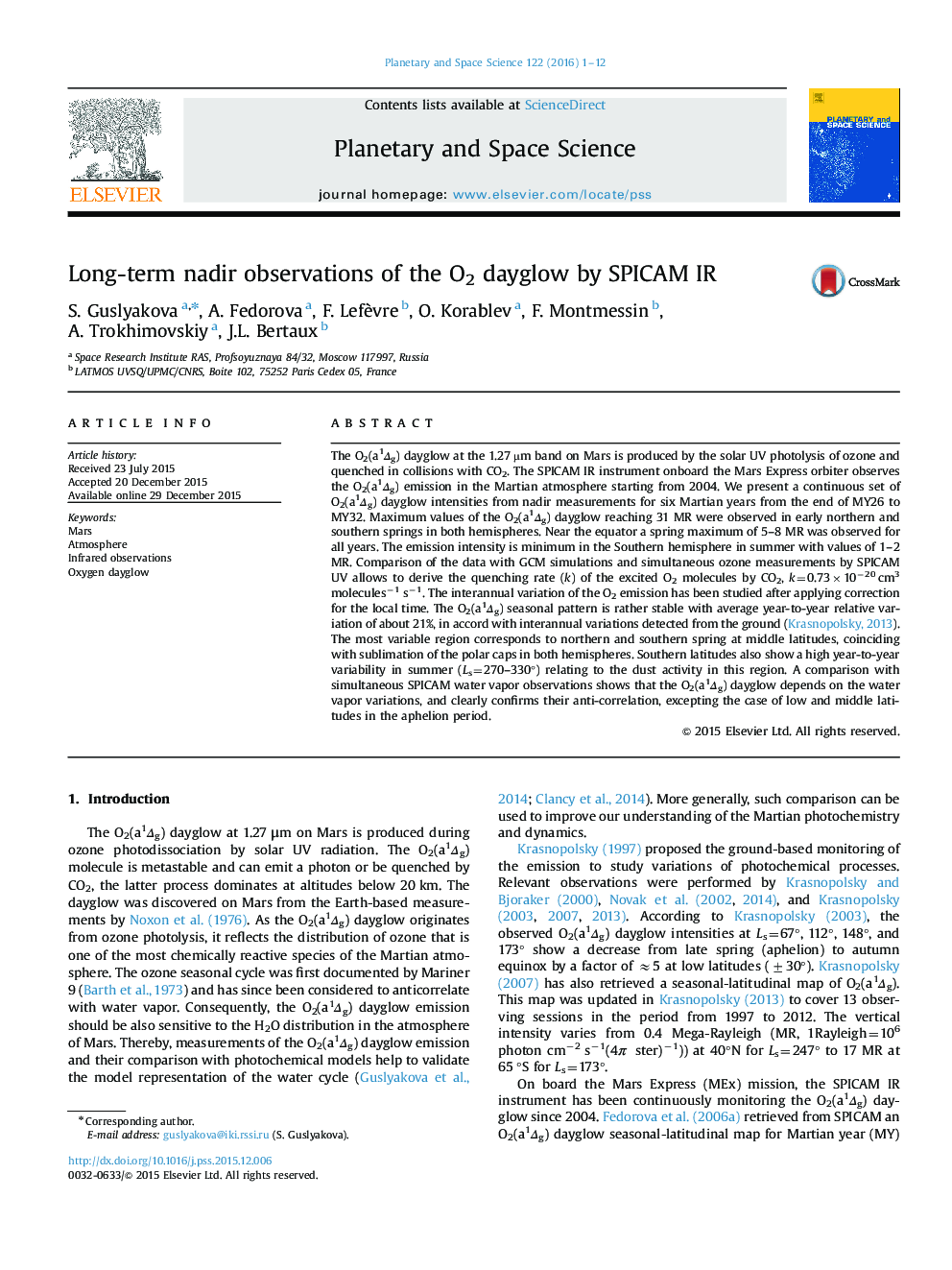| کد مقاله | کد نشریه | سال انتشار | مقاله انگلیسی | نسخه تمام متن |
|---|---|---|---|---|
| 1780864 | 1523918 | 2016 | 12 صفحه PDF | دانلود رایگان |
عنوان انگلیسی مقاله ISI
Long-term nadir observations of the O2 dayglow by SPICAM IR
دانلود مقاله + سفارش ترجمه
دانلود مقاله ISI انگلیسی
رایگان برای ایرانیان
موضوعات مرتبط
مهندسی و علوم پایه
علوم زمین و سیارات
فیزیک زمین (ژئو فیزیک)
پیش نمایش صفحه اول مقاله

چکیده انگلیسی
The O2(a1Îg) dayglow at the 1.27 µm band on Mars is produced by the solar UV photolysis of ozone and quenched in collisions with CO2. The SPICAM IR instrument onboard the Mars Express orbiter observes the O2(a1Îg) emission in the Martian atmosphere starting from 2004. We present a continuous set of O2(a1Îg) dayglow intensities from nadir measurements for six Martian years from the end of MY26 to MY32. Maximum values of the O2(a1Îg) dayglow reaching 31 MR were observed in early northern and southern springs in both hemispheres. Near the equator a spring maximum of 5-8 MR was observed for all years. The emission intensity is minimum in the Southern hemisphere in summer with values of 1-2 MR. Comparison of the data with GCM simulations and simultaneous ozone measurements by SPICAM UV allows to derive the quenching rate (k) of the excited O2 molecules by CO2, k=0.73Ã10â20 cm3 moleculesâ1 sâ1. The interannual variation of the O2 emission has been studied after applying correction for the local time. The O2(a1Îg) seasonal pattern is rather stable with average year-to-year relative variation of about 21%, in accord with interannual variations detected from the ground (Krasnopolsky, 2013). The most variable region corresponds to northern and southern spring at middle latitudes, coinciding with sublimation of the polar caps in both hemispheres. Southern latitudes also show a high year-to-year variability in summer (Ls=270-330°) relating to the dust activity in this region. A comparison with simultaneous SPICAM water vapor observations shows that the O2(a1Îg) dayglow depends on the water vapor variations, and clearly confirms their anti-correlation, excepting the case of low and middle latitudes in the aphelion period.
ناشر
Database: Elsevier - ScienceDirect (ساینس دایرکت)
Journal: Planetary and Space Science - Volume 122, March 2016, Pages 1-12
Journal: Planetary and Space Science - Volume 122, March 2016, Pages 1-12
نویسندگان
S. Guslyakova, A. Fedorova, F. Lefèvre, O. Korablev, F. Montmessin, A. Trokhimovskiy, J.L. Bertaux,